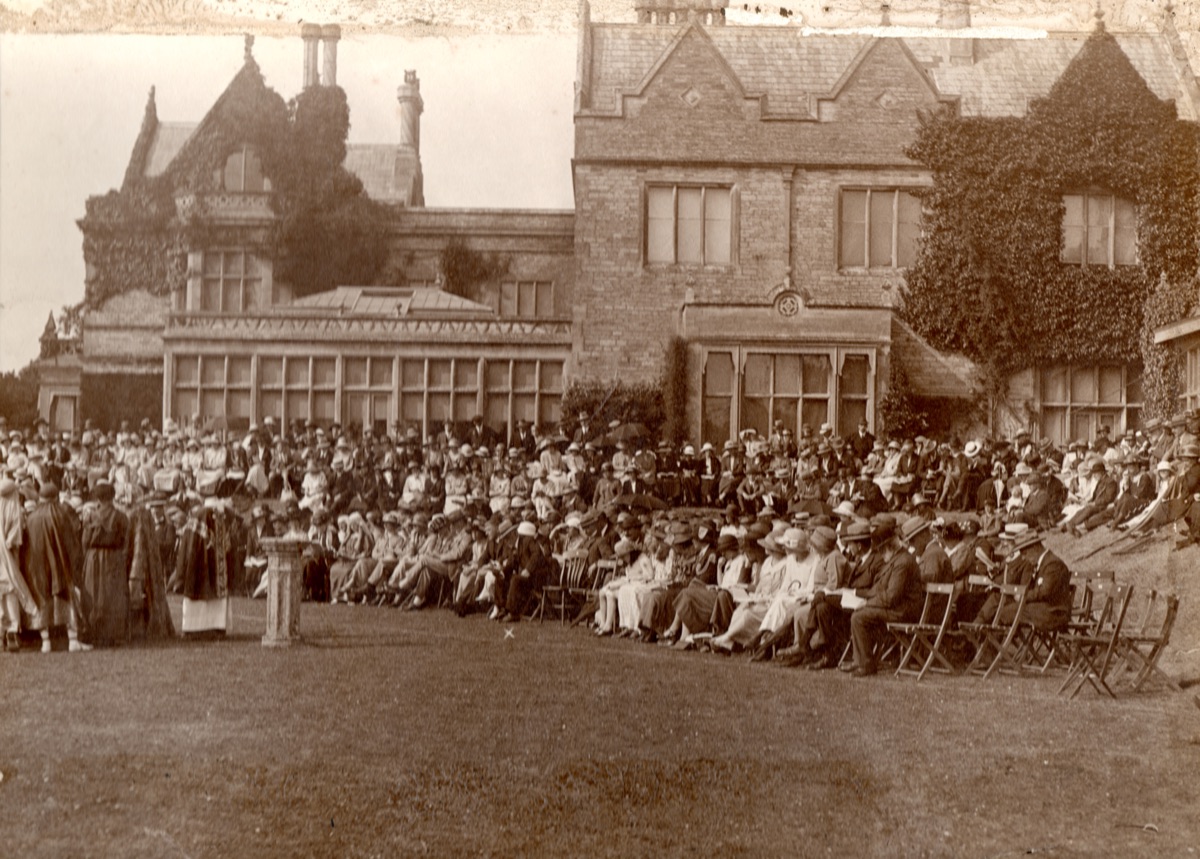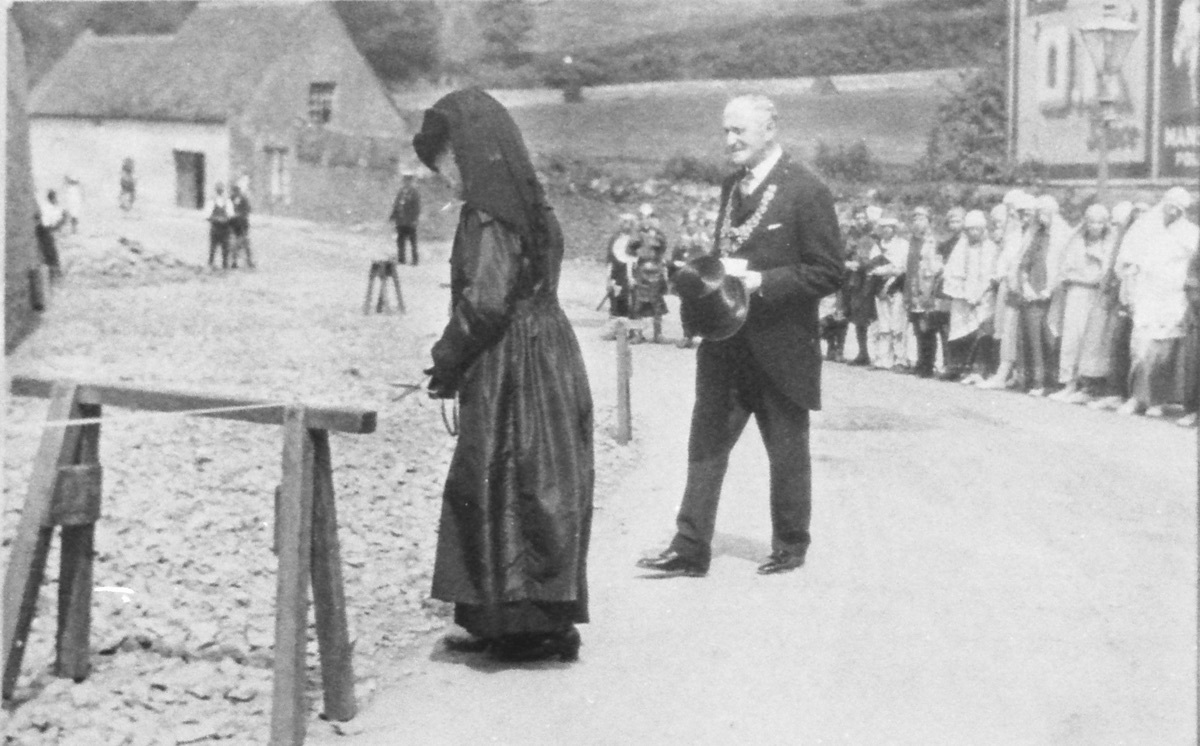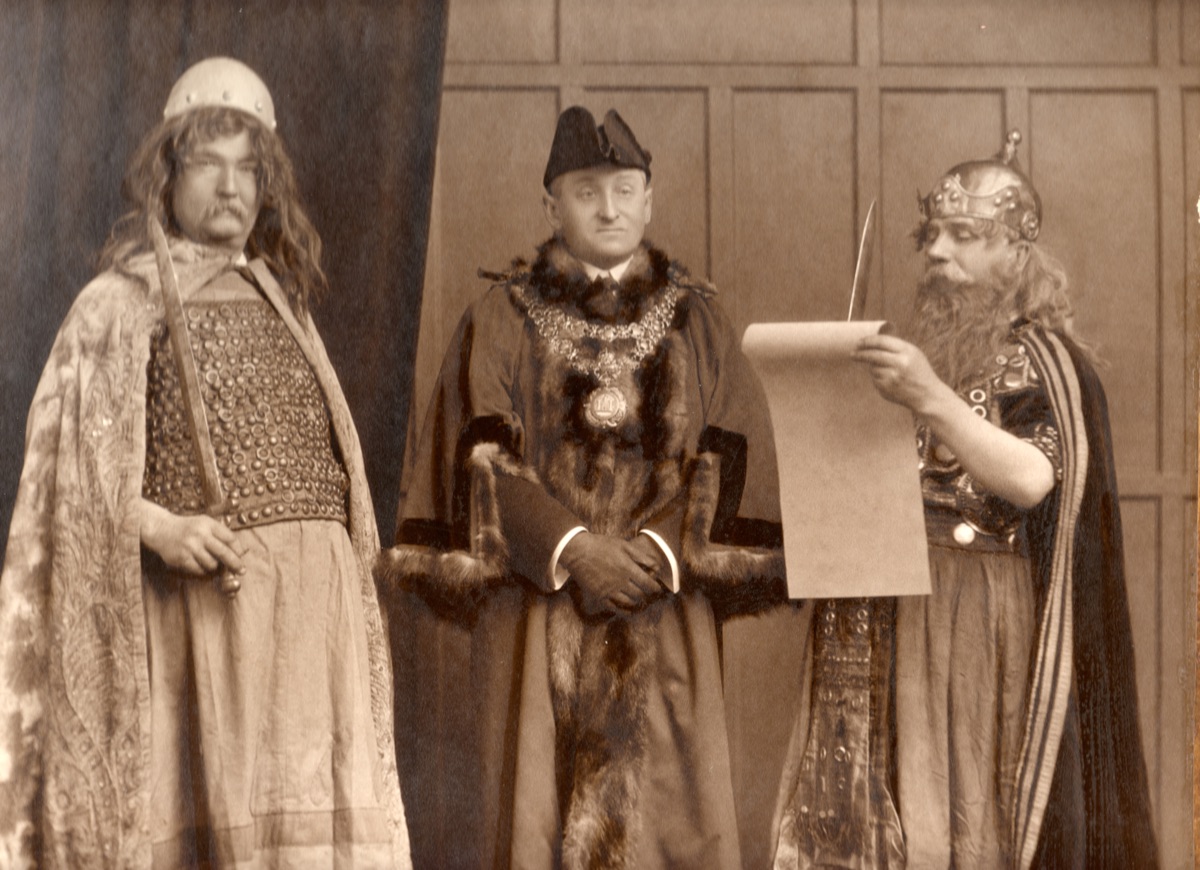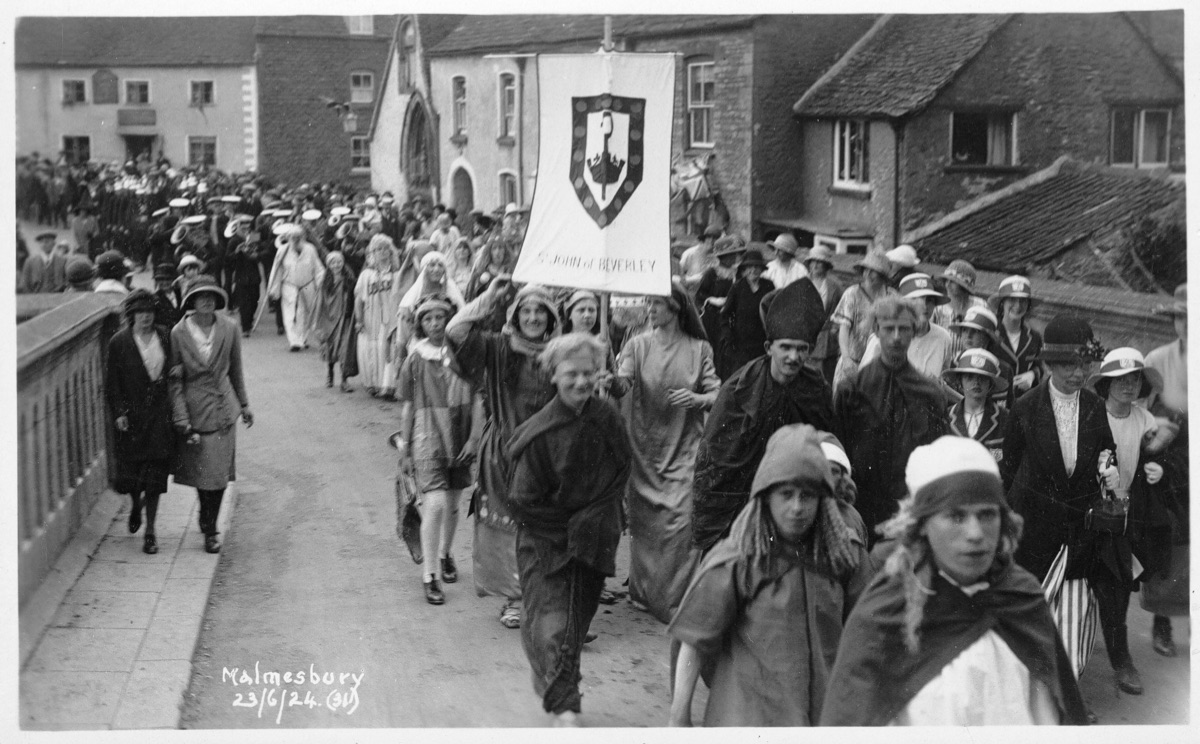King Athelstan - 924 ~ 2024
King Athelstan’s Millenary Celebrations 1924-5
The planning for Malmesbury’s celebration took a long time to gather pace.
At the Old Corporation’s King Athelstan’s Feast dinner in June 1923 the vicar, Revd. Charles Paterson, referred to a report that Kingston-upon-Thames intended to celebrate the 1,000th anniversary of Athelstan’s Coronation the following year. In reply the Mayor, Councillor Scott Mackirdy, said the Council was installing electric lighting and a kitchen in the Town Hall which would make it an ideal location for a celebratory dinner.
In Kingston ideas for their celebration circulated for some time before the Town Council in February 1924 appointed their Deputy Mayor, Dr. William Finny, as organiser. He was a General Practitioner, barrister and historian who moved to Kingston around 1900 and served on their Borough Council for 50 years. That April Dr. Finny wrote to the Wilts and Gloucester Standard suggesting Malmesbury should not lag behind his home town in commemorating this occasion. At first it was considered that there was too little time before ‘King Athelstan’s Day’ on 24th June (the second Tuesday after Trinity Sunday) for anything so ambitious as a play similar to Kingston’s. However the good doctor came to Malmesbury Secondary School on 17th May to deliver a lantern slide lecture about the play they would perform four days later. This provided the impetus for more elaborate events here.
24th June began in glorious weather illuminating the displays of flags and bunting which adorned the streets of the town centre. At 11am a United Service was held in the Abbey Church with lessons read by the Moravian and Congregational Ministers with the Archdeacon of Swindon preaching the sermon. The Old Corporation then returned to the Old Courthouse where four new members were admitted as Commoners. At 1.30pm the largest and most representative procession in living memory formed up in the precincts of the Secondary School on Tetbury Hill. The order was as follows: Mounted Saxon Warriors; the Old Corporation with their maces; Saxon Kings & retainers; 5 divisions of Secondary School pupils, King Athelstan’s, King Alfred’s, St John’s, Wessex & Mercia; Ancient Order of Foresters & Order of Odd Fellows; Boy Scouts; Characters in fancy costumes; Girl Guides followed by Father Time. The Town Band and the Royal Order of Buffaloes joined at the Triangle where the Royal Charter was read. At the Market Cross the host was augmented by Town Councillors and the Fire Brigade. Outside the Old Courthouse the Charter was read again. The procession ended at Burton Hill House which had recently been bought by Herbert Storey.


At 2.45pm Secondary School pupils performed Athelstan, a Pageant Play.
This had been commissioned much earlier in the year by the Head Master, M. J. Truscott. He had no specific plan at the time and it was written by the Head Mistress, Miss Kerry and Assistant Mistress Miss Maby. There were:
In a guest house of Malmesbury Abbey Alfred the Great meets Ecgwinna, secret wife of Alfred’s son Edward, and her son Athelstan.
At a camp near Salisbury Edward the Elder on his death-bed puts aside the claim of his son Alfred the Little to the throne and tells Athelstan of his parentage.
The Coronation in Kingston.
Athelstan discusses his plan on the eve of the battle of Brunanburgh.
Anlaf, the Danish leader, slays the Bishop of Sherbourne, mistaking him for Athelstan. Malmesbury men rush to the rescue.
In a palace by King’s Wall Athelstan feasts after the battle and rewards the Malmesbury men with their common lands and arranges his burial in the town.

The Boy Scouts then enacted another historical story depicting Athelstan returning to the town in 939 after the battle of Sodbury Hill.
He was shown granting the Charter and land following which they replicated the initiation of a commoner into the privileges of a landowner. The young performers were applauded by the spectators and treated to tea afterwards. The Pageant Play was repeated at 7pm. The day was rounded off with dinner at the Town Hall attended by 200 of the town’s leading residents as well as Dr Finny and A. J. Bonwick M.P. Prizes were presented for the best Pageant Costumes after the speeches. It was whilst doing this that Dr Finny suggested we followed Kingston’s example by collecting “a shilling fund” after each pageant to finance a stained glass window in the Town Hall to remember this notable day.
For a change Malmesbury outshone the originators of this idea with the results unveiled on the afternoon of Thursday 2 July 1925. At 2pm the widened roadway in Holloway was opened. Before the bypass was built this was the main route through the town and this narrow stretch created a bottle-neck. The company moved to the Town Hall where at 3pm Secondary School pupils enacted an extract from the Pageant Play.


This was followed by the unveiling of five stained glass panels with subjects and inscriptions as follows:
-
The Arms of Malmesbury: The gift of the town; King Athelstan Coronation Millenary, 924-1924; J. A. Jones, Mayor.
-
King Edward the Elder, reigned 991-924, who gave Malmesbury its first Charter in 916: Presented in 1924 by the following ex-Mayors of Malmesbury – C. R. Luce, 1886-7-8; J. Barnard, 1891; T. L. Hinwood, 1892; J. Moore, 1894, 1909; H. Farrant, 1900, 1912, 1913; T. Reed, 1904-5; A. Adye, 1906, 1914-5; A. L. Forrester, 1907-8-10; J. A. Jones, 1911, 1923-24; M Thompson, 1916-17-19; A. M. J. Duck, 1918; F. Weeks, 1920-21; E. M. S. McKirdy, 1922.
-
King Athelstan, 924-940, who presented the Men of Malmesbury with Five Hides of Land: The gift of the Freemen of Malmesbury, M. H. Chubb, High Steward, H. Cottle, Warden.
-
Arms of King Athelstan: Presented by the Malmesbury Secondary School, 1924, M. J. Truscott, M.A., B.Sc, Headmaster.
-
Arms of King Edward the Elder: The gift of the town; King Athelstan Coronation Millenary, 924-1924; J. Jones, Mayoress.
The last of these was unveiled by Dr Finny who explained that great care had been taken to ensure historical accuracy in the work carried out by Christopher Webb of Guildford.
The Herald’s College had provided the coats of arms, King Edward’s portrait came from an old print and Athelstan’s was based on a drawing inscribed in a book given by Emperor Otto to King Athelstan which corresponded with William of Malmesbury’s description of him.
The ceremony concluded with the Y.M.C.A. Choral Society performing Sir Sterndale Bennett’s pastoral cantata The May Queen.


